Time: 9:30AM – 3:30PM
Location: Between Aspen Highlands and Maroon Lake
Maroon Creek 08/30/2023 Photo Album
Wow. I explored another high elevation mountain stream in Colorado. How was it? Read on.
In August of 2022 my wife, Jane, and daughter, Amy, accompanied me on an e-bike excursion from Aspen Highlands to Maroon Lake and back. Along the way I was in awe of Maroon Creek, as it tumbled along the valley floor toward its junction with the Roaring Fork River near Aspen, CO. I knew that one needed to take a shuttle from May through October to reach Maroon Lake and the fabled photography site for the Maroon Bells. Would the shuttle drop off fishermen at points in between? Fishing before and after the shuttle period was another option, but November and April would be quite chilly at that elevation. My daughter pointed out that autos were allowed to drive before 8:00AM or after 5:00PM. Given all the logistical issues with accessing Maroon Creek, I was convinced that the fishery was lightly pressured and worth the effort to explore.
On Wednesday, August 30, fly fishing on Maroon Creek became a reality. As I prepared for the Maroon Creek adventure, I called the White River National Forest ranger district office in Carbondale. The folks there were extremely helpful, and I found myself at the East Maroon Portal on Wednesday morning at 8:30AM. The air temperature was fifty degrees, so I procrastinated my preparation for thirty minutes, while I waited for the sun to rise and warm the high elevation valley. Eventually I assembled my Orvis Access four weight and pulled on my fleece and rain shell, and I crossed the pedestrian bridge to access the Maroon Creek Trail on the east side of the creek. The temperature eventually rose into the seventies, and I shed my rain shell, but I removed and added back the fleece several times during the day in accordance with the fluctuating cloud cover.

Massive Pool
The man that I spoke to at the ranger district office mentioned a huge and very popular pool downstream from the bridge crossing, and the young lady at the welcome station echoed his recommendation, so I veered to the left and wandered downstream along the trail for forty yards. Sure enough, a huge horseshoe shaped pool appeared where the creek made a sharp, greater than ninety degree bend. Wide shelf pools existed on both sides of the main current which deflected off the eastern bank and turned back toward the northwest. I found a gap in the bushes to allow unobstructed backcasts on the eastern bank, and I rigged with a tan size 8 pool toy hopper and a salvation nymph. I was new to the pool and somewhat intimidated by the size, but I began lobbing casts to the main current. The entire area was shrouded in shade, but a glare made following my fly difficult, as it bounced along the entering center current. Much to my surprise, as I was prospecting left, right and straight ahead; several rises appeared. I attempted to spot some casts in the vicinity of the surface feeders, but I managed only a refusal for my efforts. At least five rises were visible, so I decided to abandon the dry/dropper and switched to a single olive-brown size 14 deer hair caddis. A caddis is always my go to default, when I am uncertain about the source of trout feeding, but in this case the ploy failed, and after fifteen minutes of futile casting, I surrendered to the pool and resumed my original plan.
I walked back to the bridge and picked up the Maroon Creek Trail which paralleled the creek southward to the junction of East and West Maroon Creeks. A crude estimate on the parking lot map suggested that the creek ran a mile from the East Maroon Creek Portal to the confluence, so I hiked for .3 mile to get away from the parking lot but also to allow sufficient stream distance to cover over the course of the day. The trail began to angle uphill and away from the creek, so I cut through the woods and quickly found a space between the trees to access the creek.

This Small Pocket Produced Quite a Few Trout

Big Mouth
Between 10:00AM and 3:30PM I battled my way southward, and I landed thirty-six trout. This sounds like a resounding success, but this fish count was achieved with a large amount of adversity. The gradient for the .7 mile of creek coverage was rather severe, and this limited the fish holding lies quite a bit. At least four times I was forced to bash through thick bank vegetation in order to advance due to very swift current across the entire creek bed accompanied by thick brush and bushes tight to the water. The other downside was the size of the fish. Of the thirty-six fish that rested in my net, thirty-four were brook trout, and the largest of these catches stretched the measuring tape to ten inches. The predominant length was six inches, but these char made up for lack of size with their brilliant display of colors. Orange bellies, white-edged fins and elaborate patterns of aqua, green, yellow and purple vermiculation on the backs of these fish dazzled my eyes. Two of the landed trout were cutthroats, and these were eleven and twelve inch fish that offered significant pound for pound resistance.

So Pretty

Lots of Orange
I cycled through a range of flies during my day on the rapidly tumbling mountain stream, but the top producers were the size 8 tan pool toy hopper and a size 14 peacock hippie stomper. During the early morning session I utilized a deer hair caddis, the pool toy with a salvation nymph and then a prince nymph. By lunchtime at 11:45 these flies produced sixteen trout, but in truth all but one smacked the pool toy hopper. Ten of the sixteen trout came from two honey holes that featured slow current and at least four feet of depth. If I could find productive water, the fish were there.

Rare Trout Holding Spot
After lunch I switched to a single classic Chernobyl ant for the exceptional floatation qualities, but it only induced one take. Next I tried a yellow size 8 fat Albert with a salvation nymph dropper, and this combination delivered another hungry brook trout, but clearly I was bypassing some attractive spots with no success. I paused and analyzed the situation, and I converted to a single dry fly in the form of a tan-bodied size 14 chubby Chernobyl. I was optimistic about this fly, but it attracted one fish and then failed to produce thus provoking another change.

Under Control
For the remainder of the afternoon I cast a double dry offering, and the one constant was the hippie stomper. I boosted the fish count from eighteen to thirty-six, and the stomper was complemented with a purple haze and parachute green drake; and toward the end, the hippie stomper was fished solo. The purple haze and green drake accounted for a combined total of five fish, so the hippie stomper was the overwhelming star of the afternoon and only trailed the pool toy on the day.

Prime Pool

Pool Resident

Upper End of Pool Produced As Well
Toward the end of my adventure on Maroon Creek I encountered some massive deep pools upstream from some huge log jams. The water was over six feet deep with a significant amount of dead logs, and these locales harbored quite a few colorful brook trout. As I moved upstream, I monitored the surrounding terrain, and for awhile both sides of the creek featured steep banks, and I grew concerned about my ability to find an exit point. Beyond the last deep pool, the left ridge moderated, and when I approached a spot that was clear of trees and bushes, I decided to take advantage. At 3:30 I tucked my fly in the rod guide and mounted the bank, and then I ambled perpendicular to the stream through some tall grass and thistles, until I intersected with the trail. One mile later I was back at the parking lot and climbing out of my waders.

Cutthroat Number Two

Home of Cutthroat
Maroon Creek certainly ranks among my favorite outings of 2023, but unlike others that featured large fish or quantities of fish, the appeal of Wednesday was the feeling of remoteness and venturing, where others may not have attempted. I also felt a sense of accomplishment from being able to endure fast water and difficult wading conditions during my senior citizen status. I was extremely cautious, and in many circumstances I was very measured with each step or in planning my moves over logs, rocks and between nettlesome bushes and branches. Of course, the spectacular surroundings were another plus, and simply developing a successful plan that afforded access to Maroon Creek provided a deep sense of accomplishment. Would I return? Possibly. A lot of unexplored creek remains, and I suspect that some lower gradient sections might offer superior fly fishing. Getting familiar with a creek is another challenge that I enjoy. Wednesday was a lot of effort for small fish, but that is certainly part of the fly fishing equation.
Fish Landed: 36
Like this:
Like Loading...
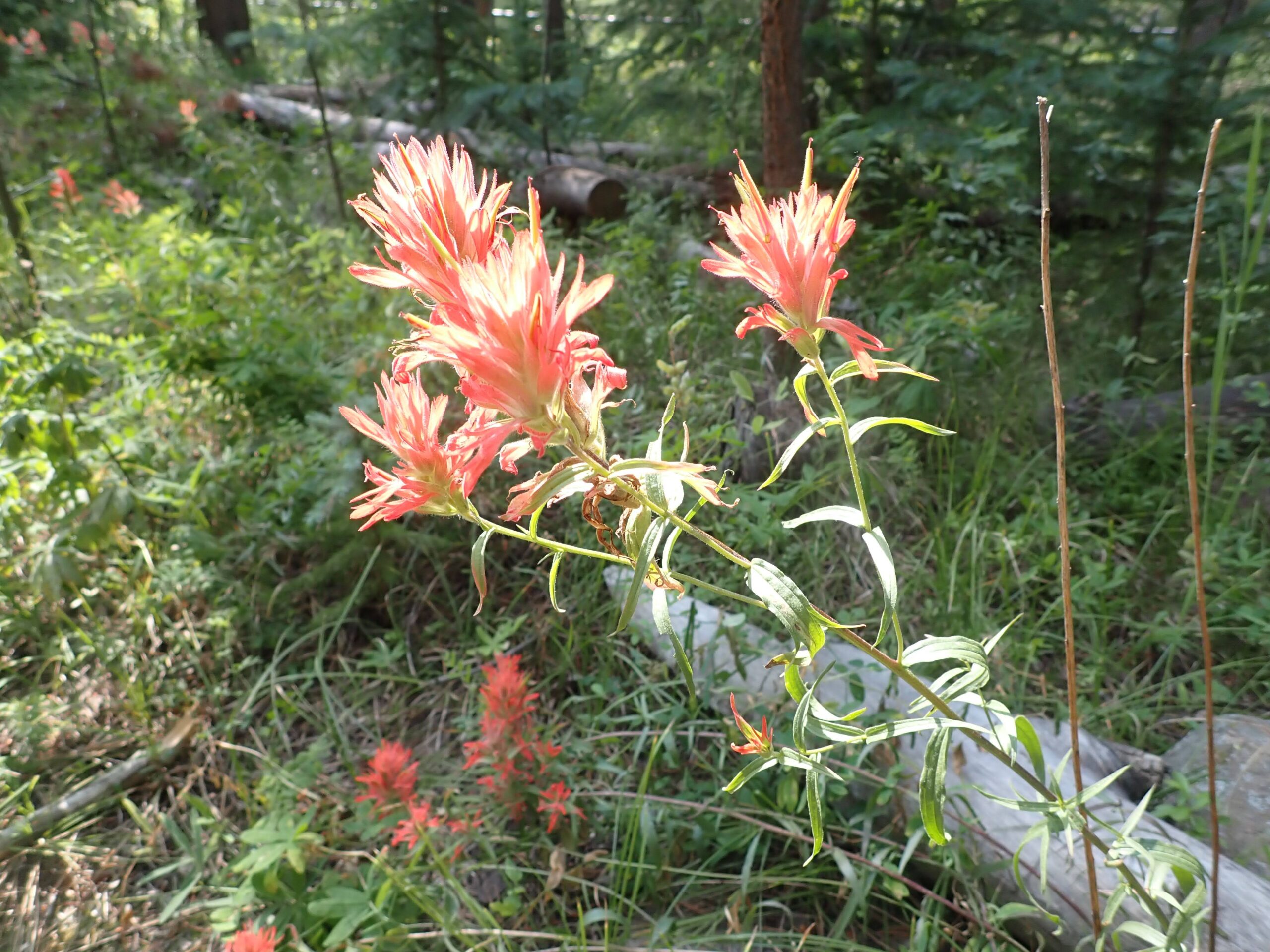 Indian Paintbrush in Abundance
Indian Paintbrush in Abundance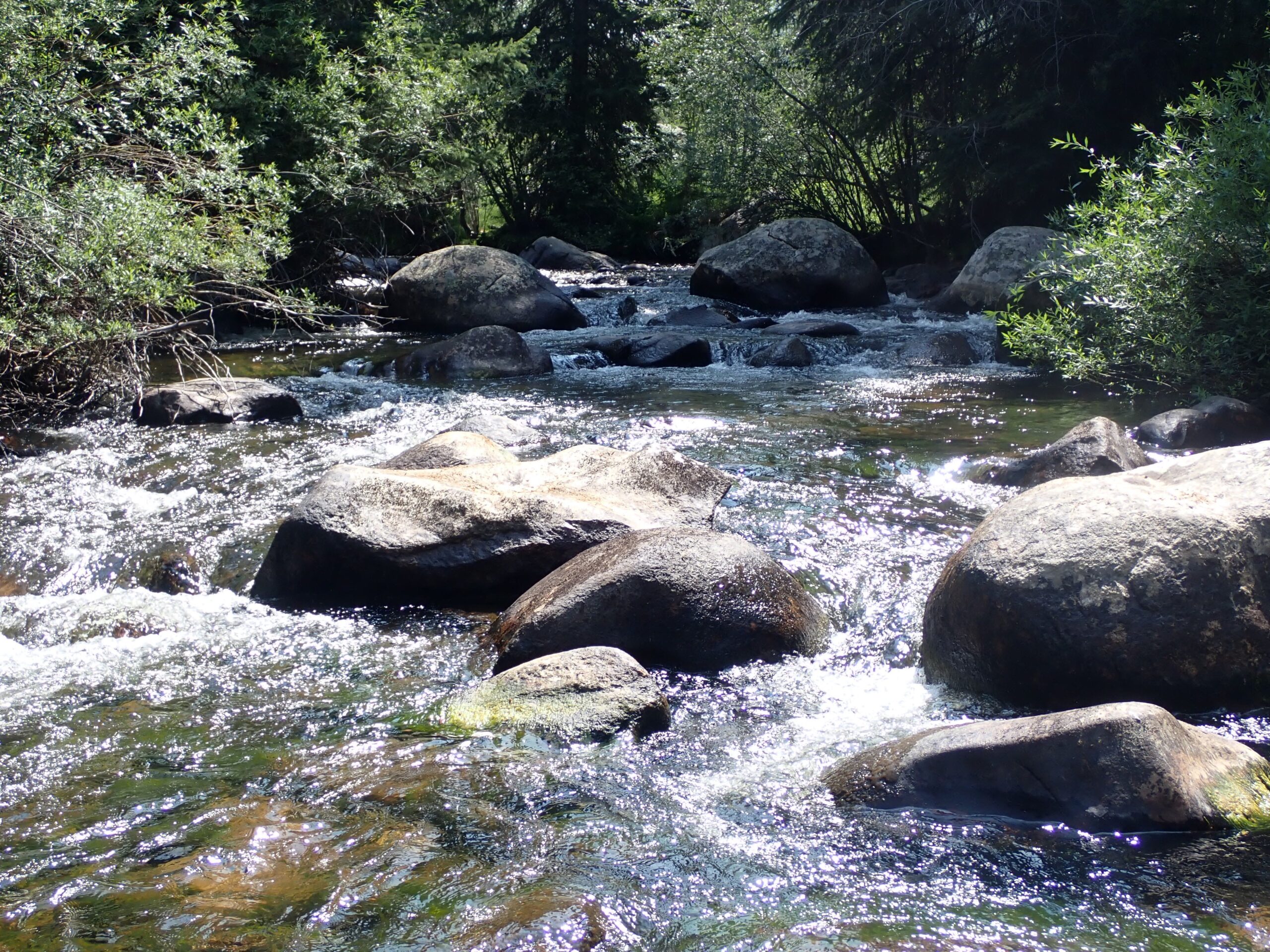 Lots of Pocket Water in This Creek
Lots of Pocket Water in This Creek
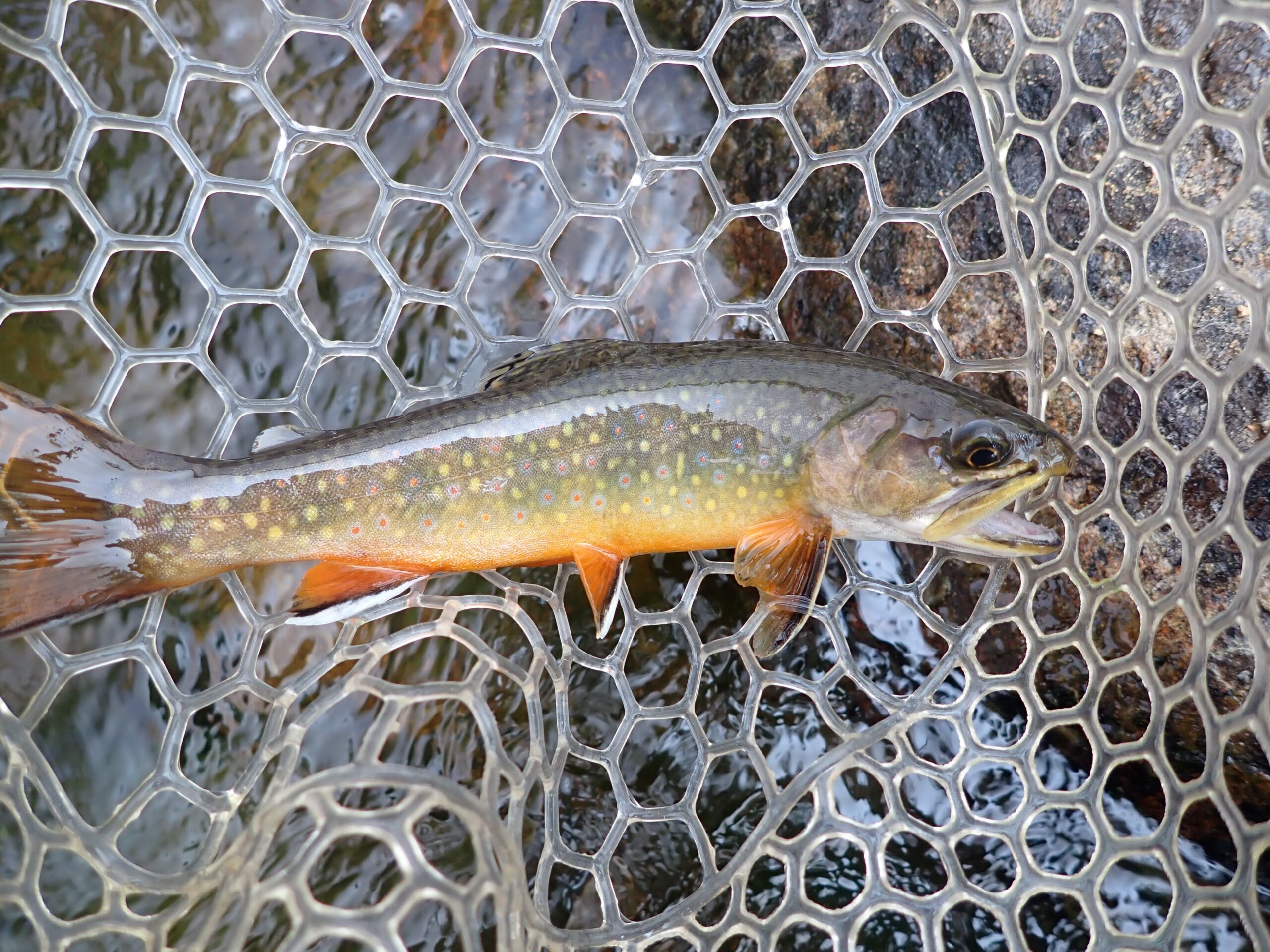 Orange and Yellow Dominate
Orange and Yellow Dominate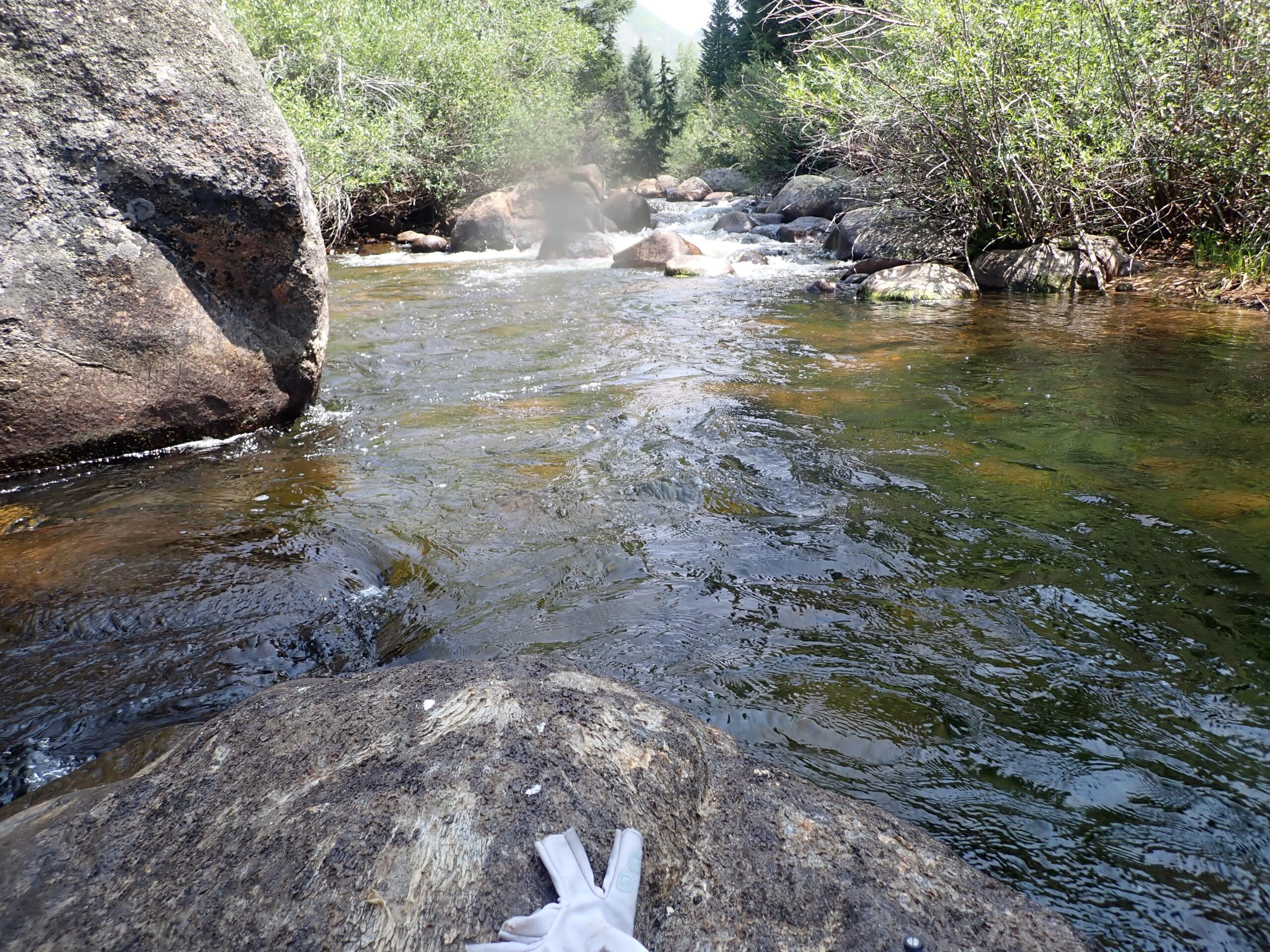 One of the better Pools
One of the better Pools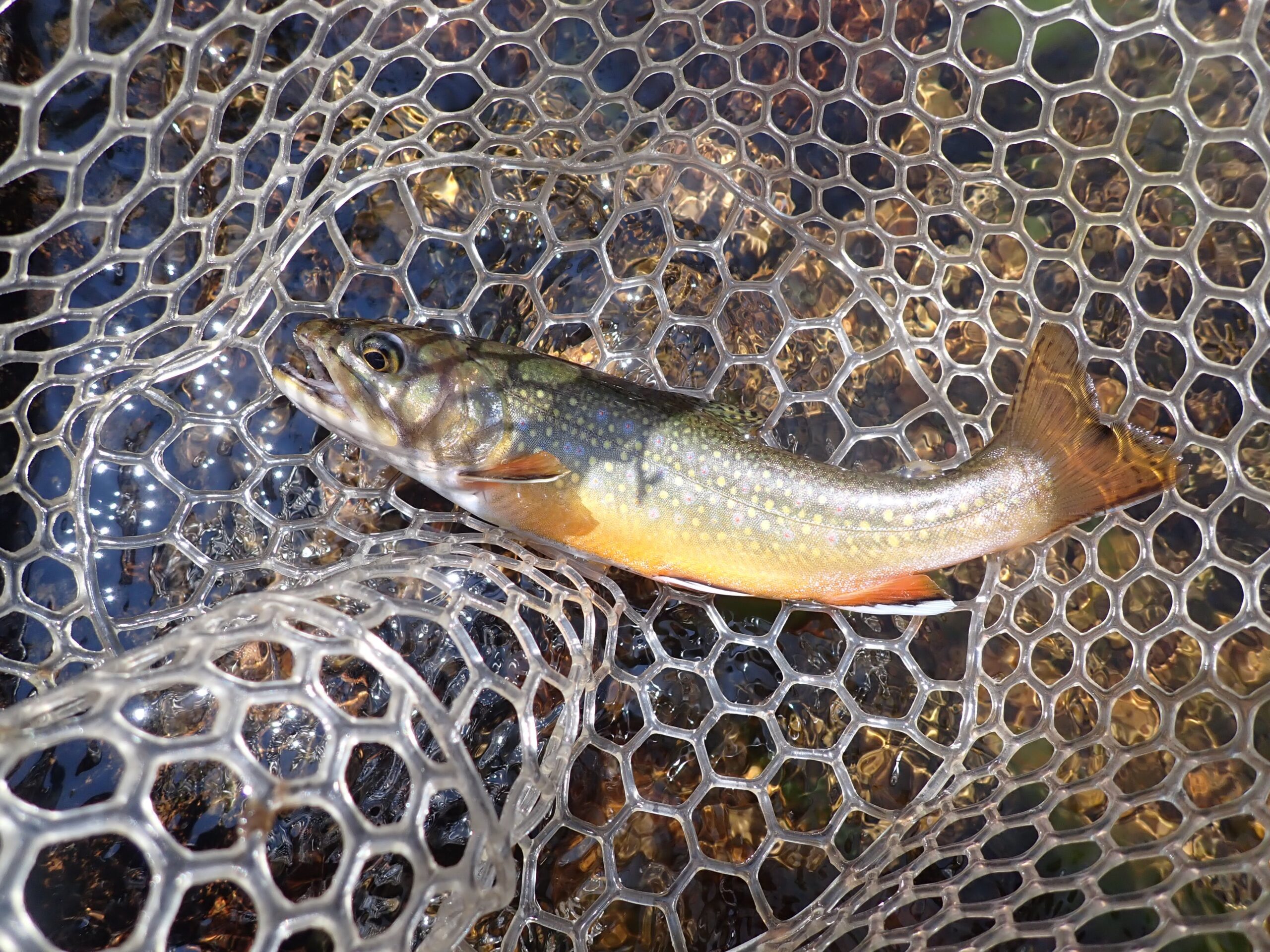 Pastel Colors
Pastel Colors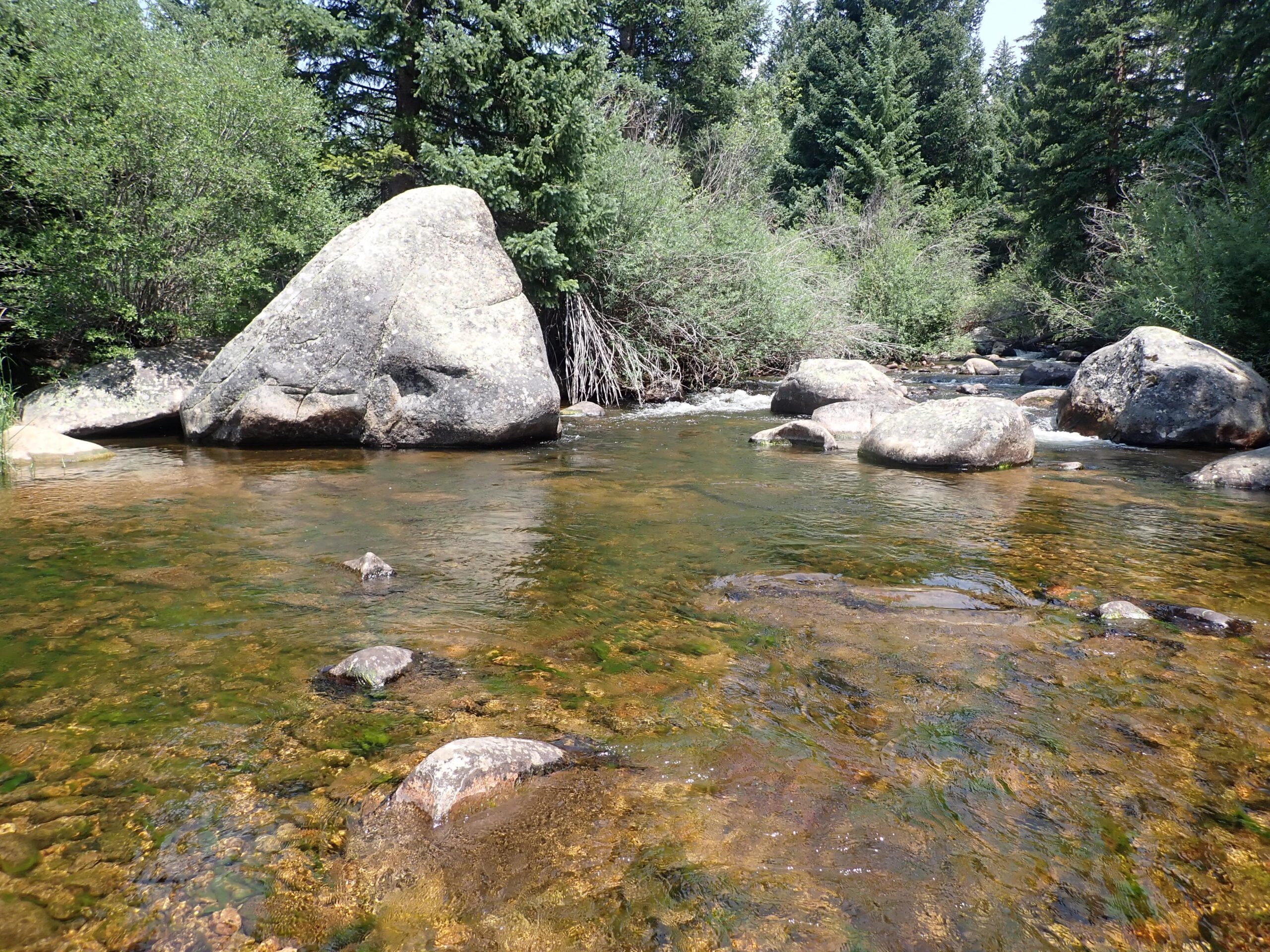 Another Prime Pool
Another Prime Pool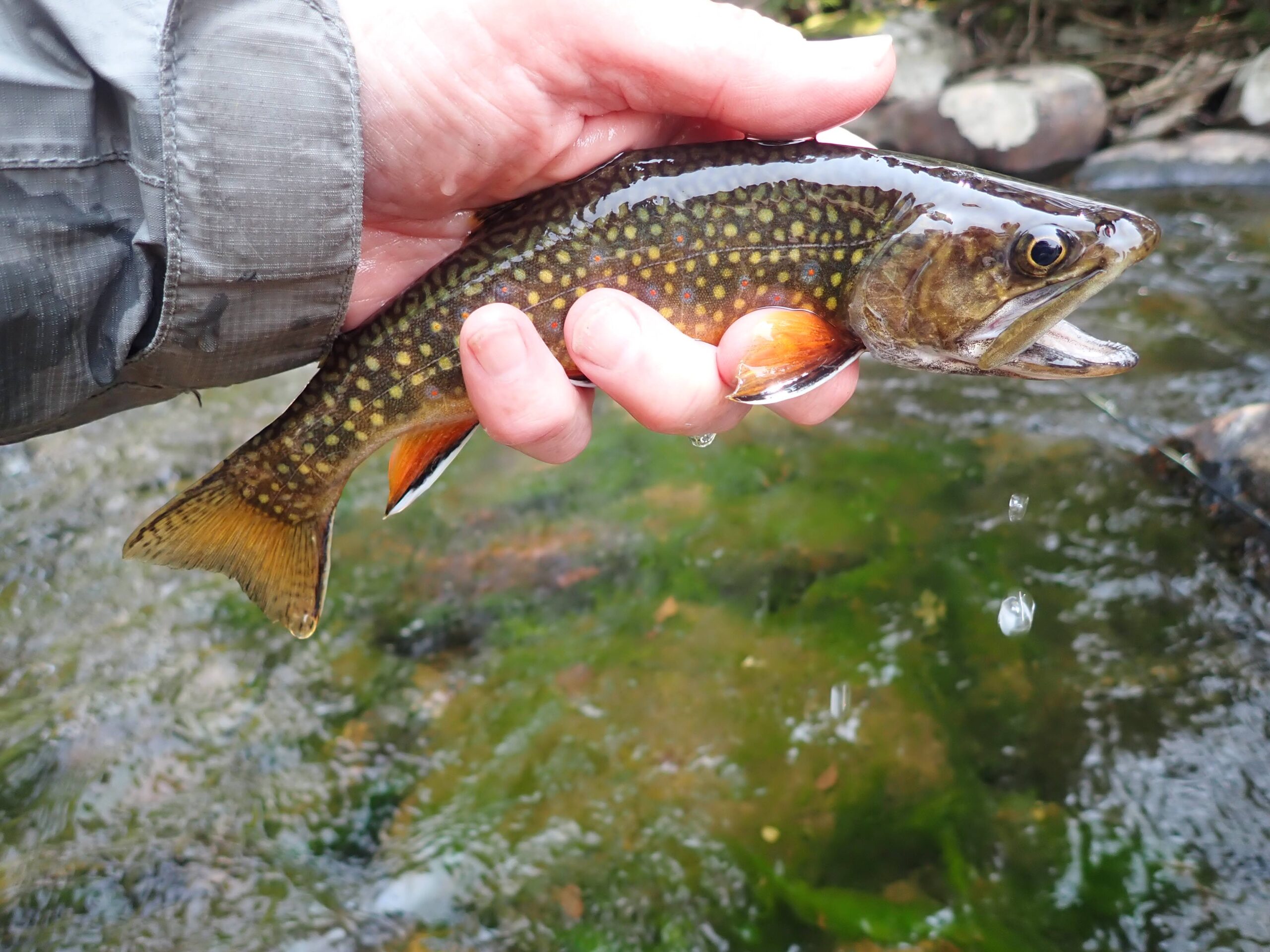 Brook Trout Perfection Here
Brook Trout Perfection Here